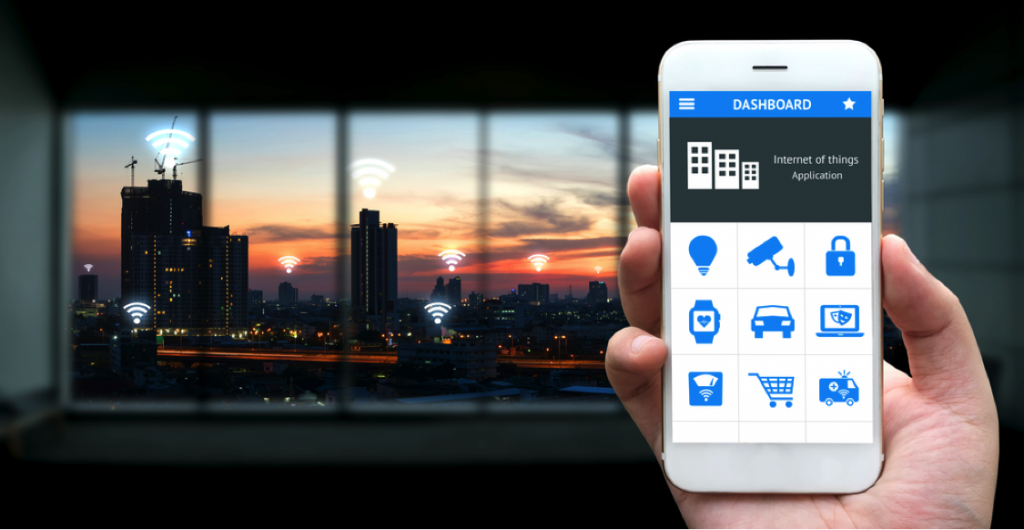
Long gone are the days where you had to worry about leaving a light on when you left the house or waiting at a red light at 1 a.m. when no other cars are in sight. Smart technology is drastically changing how humans interact with their surroundings. The interconnectedness of technology is called the “Internet of Things” and works to streamline everyday processes to increase efficiency and ultimately make your life better.
But what is the IoT, and how does it work? That’s what we’re going to discuss below. Before you know it, you’ll notice how devices and systems around you are working in harmony to make every day processes easier.
What is the Internet of Things?
Recently, you may hear the term Internet of Things thrown around at work or while you’re out on the town. When you enter these conversations, you’re probably bombarded with a bunch of technical jargon that doesn’t make sense to you. It’s okay—we’ve all been there.
Simply put, IoT is a giant network of digital computer devices, such as computers, that are connected by the internet to collect data and perform functions. The end goal of IoT is to improve the human experience.
Still confused? Here’s an example. You go to bed at night and wake up feeling refreshed after an uninterrupted 8-hour slumber. Your smartwatch monitors your sleeping patterns and pairs with your alarm, to alert your thermostat to raise the temperature, so you’re not freezing as you walk across the cold hardwood floor to your bathroom. While you’re getting ready, your coffee machine begins brewing your morning cup of Joe, and your wireless WiFi printer prints a copy of the presentation you’re delivering at work after seeing it in your calendar.
Pretty cool, right? And all of these actions occur without you touching a single thing. IoT doesn’t require human-to-human or human-to-computer interaction. All it needs is a connection, and devices will be able to communicate with each other.
How Does the Internet of Things Work?
Now that you know what IoT is, you may be wondering how it works. IoT needs four things to function: Devices and sensors, a connection, data processing software, and a user interface.
- Devices and sensors: Pretty much anything that has an on/off switch can be connected to the Internet of Things. These devices need a sensor in order to work. For example, your smart toaster is a single device with one sensor, while your smartphone is a device with multiple sensors (GPS, camera, accelerometer).
- A connection: There are numerous ways you can keep your devices connected, including Bluetooth, WiFi, Ethernet, cellular, and satellite. A connection is needed for your device’s data to be sent to the cloud.
- Data processing software: After your device’s data is sent to the cloud, data processing software, or an IoT platform, such as an Amazon Alexa or Google Home, will collect the information to perform an action, such as letting you know your toast is ready or if an intruder is on your property.
- User interface: The final piece to the IoT puzzle is the user interface. IoT-compatible user platforms are usually found on smartphones. When a device has an alert, a message will be sent to the user through text, email, or notification. For example, if it’s time for your laundry to be switched to the dryer, a notification may pop up on your smart TV. Or, a user can open their phone and check into their video system to see if anything suspicious is occurring on their property.
With these four components working together, devices are able to work together. IoT is also maturing rapidly and is helping a variety of industries, such as healthcare, manufacturing, and the insurance industry.
For example, smart air conditioning and heating systems in hospitals can be used to reduce electricity use, keep patients comfortable, and save money. Even students are benefiting from IoT, as smart dorms allow them to secure their room when they’re in class, get access to writing services with the tap of a button, and reduce their energy use.
Key takeaways
Whether you like it or not, the future is here. The Internet of Things is changing how humans and devices interact with one another and help consumers and industries operate efficiently. From smart cities that can monitor traffic and solve city congestion to smart home appliances like water heaters that don’t make you wait for heating technicians to fix the issue, IoT is here to make your life easier.